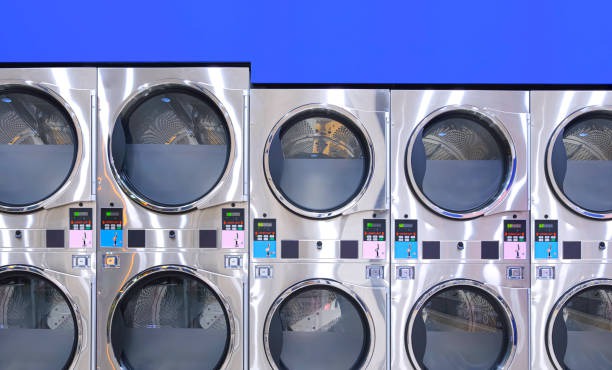Welcome to our comprehensive look into the world of children’s orthodontics! As a parent, you’re always on the lookout for what’s best for your little one, and that includes their dental health. We’re here to share some valuable insights on how to spot the signs that may indicate your child could benefit from orthodontic solutions.
From the crowded smiles to the jaw that doesn’t seem to align, we’ll guide you through the indicators and when it might be time to seek professional advice. So, let’s take a closer look at what to watch for and how to proceed with ensuring your child has a healthy, beautiful smile.
Picking Up on the Early Clues
As kids grow, their mouths change rapidly, and sometimes, these changes include developments that may need a little extra attention. Keeping an eye on how your child’s teeth and jaws are growing is key. Here’s what you should look out for:
-
Early or Late Loss of Baby Teeth: If your kiddo’s baby teeth fall out too early or hang around longer than expected, it could be a sign of developmental issues that might need correcting.
-
Difficulty Chewing or Biting: Struggling during mealtime is challenging; it could also signify a misaligned bite or other oral problems.
-
Crowding or Misplaced Teeth: Overlapping or out-of-place teeth aren’t just cosmetic concerns. They can also lead to difficulties in cleaning, which could result in cavities or gum disease.
-
Biting the Cheek or Roof of the Mouth: This can be a telltale sign of a bite that’s out of whack.
-
Jaws That Pop or Make Sounds: If you hear clicking or popping noises from your child’s jaw, this could be an early indicator of jaw misalignment or temporomandibular disorder (TMD).
If you’re looking for a kids dentist in Greensboro, NC, they will be well-equipped to advise you on whether your child’s dental development is on track or if it is time to consider orthodontic solutions.
Time for an Orthodontist
Some signals are as clear as the smile on your face—or your child’s, in this case. When you notice these visual cues, it may be time to pencil in a visit to an orthodontist:
-
Teeth That Clearly Don’t Line Up: If your child’s teeth are visibly misaligned or if their bite seems off when their mouth is closed, an orthodontist can help.
-
Overbite or Underbite: Sometimes, the upper teeth protrude significantly over the lower teeth, or vice versa. These are common alignment issues orthodontists address every day.
-
Gaps Between Teeth: While some gaps can be charming, extensive spacing might lead to issues down the line and often can be easily corrected with orthodontic intervention.
-
Tooth Crowding: When there doesn’t seem to be enough space in the mouth for all of your child’s teeth, an orthodontist can provide solutions to prevent future dental concerns.
When Oral Habits Become a Red Flag
Sometimes, the signs that your child might need orthodontic solutions come not just from what you can see but also from their habits. Here are a few oral behaviors that could point toward the need for an orthodontic consult:
-
Persistent thumb sucking after the age of five
-
Extended use of a pacifier
-
Mouth breathing, rather than breathing through the nose
-
Difficulty in giving up bottle feeding
These habits can impact the development of your child’s teeth and jaws, potentially leading to the need for orthodontic treatment.
Understanding Orthodontic Screening
While we’ve covered signs you can look out for at home, a professional evaluation is indispensable. That’s where orthodontic screening specialists in Greensboro, NC, come in. These professionals can provide a thorough screening, often in coordination with your child’s routine dental visits. They use their expertise to spot subtle signs of issues that a layman’s eye might miss.
An orthodontic screening is usually recommended by the age of seven, as suggested by the American Association of Orthodontists. This early screening gives specialists a chance to catch any potential issues before they become more severe and ensure that your child’s teeth and jaws are developing properly.
Bracing for the Next Steps
So, you’ve noticed the signs and your child’s dentist has given you the green light for an orthodontic consult. What can you expect next? Here’s a rundown of potential recommendations:
-
Braces: The most common orthodontic treatment, which can be either metal, ceramic, or even clear aligners.
-
Space maintainers: If your child loses a tooth early, a space maintainer can hold open the space for the permanent tooth to grow in.
-
Palate expanders: These are used to widen the upper jaw so that the upper and lower teeth fit together better.
-
Retainers: After braces come off, retainers may be necessary to keep teeth in their new positions.
Every child’s needs will be different, and the orthodontist will tailor a treatment plan specific to your child’s case.
When Orthodontic Issues Become Urgent
Although much of orthodontic treatment is planned out over months or years, sometimes unexpected issues crop up that require urgent orthodontic treatment.
Orthodontic emergencies might include:
-
Trauma to the mouth.
-
Severe discomfort.
-
A loose or broken brace bracket.
-
An orthodontic wire causes irritation that can’t be managed with wax.
If your child encounters any of these issues, it’s essential to contact your orthodontist right away for advice and potential treatment.
Conclusion
Spotting the need for orthodontic solutions for your child might seem daunting, but with the information we’ve provided, you’re better equipped to identify the signs. Remember, the key is to be observant and proactive. Regular dental check-ups with a kid’s dentist and, if indicated, an orthodontic screening can go a long way in ensuring your child’s dental health is in check.
Early detection and treatment often result in a simpler, more effective orthodontic process. By knowing what to look for and when to seek professional advice, you’re laying the groundwork for your child’s beautiful smile for years to come. And if an orthodontic emergency does arise, know that you have resources at your disposal to address it quickly and effectively.



